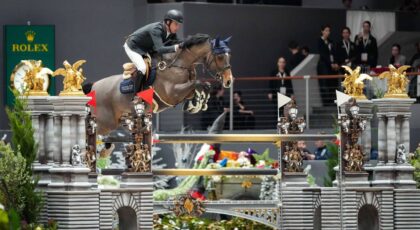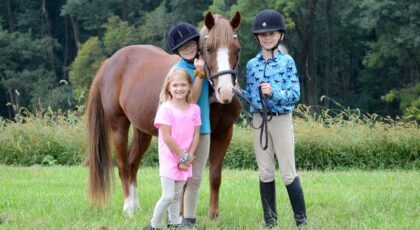It’s not that there’s anything wrong with a good, honest synthetic footing—Reliable. Easy. Durable. Weather resistant—all desirable attributes.
It’s just that it’s, well, synthetic.
Fact is, there’s simply no substitute for the real footin’ thing. Turf. Grass. Lawn. Open sky and nature’s carpet. Organic, cage-free footing. In show jumping, nothing stamps a show as first class like a perfectly prepared pitch. While grass courses are show staples in other parts of the world, they are reserved for the cream-of-the-crop events in the U.S.. Live Oak. Old Salem. New Albany. Hampton, to name a few.
Go ahead and add Deeridge Farm to the list, site of this week’s Palm Beach Masters and FEI World Cup. A staple on Wellington’s winter circuit, The Jacobs family invited the world over to their place for a four-day party. Through three days and the pounding of hooves from hundreds of horses, the Grand Prix grass is in golf course shape.
“The grass field felt like you could have gone without studs,” beamed Laura Kraut, runner-up in Thursday’s CP Welcome Stake. “‘Adam’ went 51st and you couldn’t even see that horses had gone. It’s absolutely perfect. We’re very thankful that they put this event on and we’re happy to be here.”
Fellow riders echoed Kraut’s sentiments.
“It’s wonderful to jump on grass. You don’t get too much of an opportunity to show on the grass, so I show on it whenever I can,” said Andrew Ramsay. “I love it, it feels like a bit more sport and the whole ambience is really nice, the setup here is great. It’s my first year here and hopefully not my last.”
“These horses just love it,” Ian Millar affirmed.

Laura Kraut
Everyone loves grass. Riders. Horses. Spectators. Grass. Grass. Grass. Give us our grass. So why don’t more American shows offer turf?
Durability issues, maintenance requirements and the threat of inclement weather can pose havoc on ill-prepared turf course and keep organizers up at night. It’s not as easy as weeding and mowing, as Dan Carr, founder of Westwind Surfaces and architect of the Deeridge lawn, explained that a plush, durable lawn does not sprout up overnight.
“We use a lot of organics for turfs to get a lot of roots down in the 8 to 10 inch root zone layer. Two weeks before the show we can start weaning the water off to the point where all I need to do is keep it syringed and keep the firmness that I need. To get us to [this week], we really went into performance mode in December. So two months out from the show.”

Charlie Jacobs
Last year’s show at Deeridge was welcomed with rain. Lots of rain. Enough to render the grass ring unusable. So Carr was brought in to re-do the course, from the root up.
“The course before was beautiful but it wasn’t a functional design for hard use or bad weather. It just looked pretty. So we lifted it about two and half feet and blended in sands and organics and built it up from the root zone. We put drains in, which gives the ability to totally control how much moisture you want in that arena.”
The result is a pristine swath of Bermuda that’s pure barefoot bliss. All too rare on show circuits.

“If you talk to the top riders, they much prefer to jump on grass,” Carr added. “Amateurs prefer to ride on sand. It’s what they understand. I think for the fine tuning of the horse, they can really feel the horse better on turf, in my mind. If you do it correctly, there’s nothing better.”




 February 5, 2017
February 5, 2017 




























